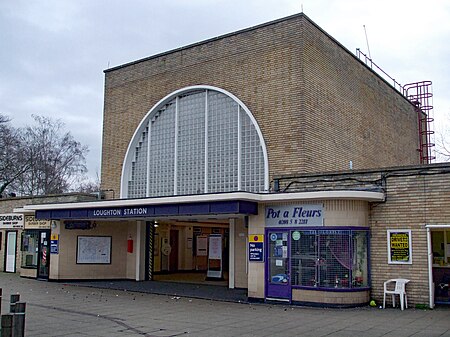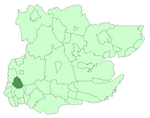Loughton tube station
Central line (London Underground) stationsFormer Great Eastern Railway stationsGrade II listed buildings in EssexGrade II listed railway stationsInternational style architecture in England ... and 8 more
London Underground Night Tube stationsLoughtonProposed Chelsea-Hackney Line stationsRail transport stations in London fare zone 6Railway stations in Great Britain opened in 1856Transport in Epping Forest DistrictTube stations in EssexUse British English from August 2012

Loughton () is a London Underground station in the Epping Forest district of Essex. It is entirely above ground, and platforms are accessed by staircases which rise from ground level. It is served by the Central line and lies between Buckhurst Hill and Debden, in Travelcard Zone 6. It is the larger of the two Underground stations in the town of Loughton, with Debden station being the smaller. It acts as a terminus for services from Ealing Broadway at peak hour.
Excerpt from the Wikipedia article Loughton tube station (License: CC BY-SA 3.0, Authors, Images).Loughton tube station
Lancaster Drive, Epping Forest
Geographical coordinates (GPS) Address Nearby Places Show on map
Geographical coordinates (GPS)
| Latitude | Longitude |
|---|---|
| N 51.64138 ° | E 0.05527 ° |
Address
Eastbound Platform 4
Lancaster Drive
IG10 3NQ Epping Forest
England, United Kingdom
Open on Google Maps






